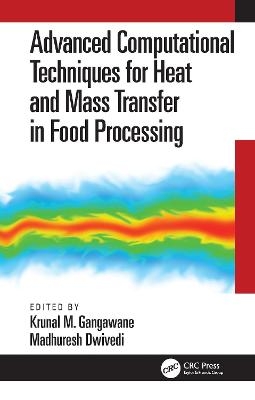
Advanced Computational Techniques for Heat and Mass Transfer in Food Processing
CRC Press (Verlag)
978-0-367-70901-3 (ISBN)
Computational methods have risen as a powerful technique for exploring the system phenomena and solving real-life problems. Currently, there are two principle computational approaches for system analysis: continuous and discrete. In the continuous approach, the governing equations can be obtained by applying the fundamental laws, such as conservation of mass, momentum, and energy over an infinitesimal control volume. On the other hand, the discrete approach concentrates on mimicking the molecular movement within the system. Both approaches have pros and cons, and continuous development and improvement in the existing computational methods are ongoing.
Advanced Computational Techniques for Heat and Mass Transfer in Food Processing provides, in a single source, information on the use of methods based on numerical and computational analysis as applied in food science and technology. It explores the use of various numerical/computational techniques for the simulation of fluid flow and heat and mass transfer within food products.
Key Features:
Explores various numerical techniques used for modeling and validation
Describes the knowhow of numerical and computational techniques for food process operations
Covers a detailed numerical or computational approach of the principles of heat and mass transfer in the food processing operation
Discusses the detailed computational simulation procedure of the food operation
Recent years have witnessed a rapid development in the field of computational techniques owing to its abundant benefit to the food processing industry. The relevance of advanced computational methods has helped in understanding the fundamental physics of thermal and hydrodynamic behavior that can provide benefits to the food processing industry in numerous applications.
As a single information source for those interested in the use of methods based on numerical and computational analysis as applied in food science and technology, this book will ably serve any food academician or researcher in learning the advanced numerical techniques exploring fluid flow, crystallization, and other food processing operations.
Dr. Krunal M. Gangawane, M.Tech., PhD., is an Assistant Professor of Chemical Engineering at National Institute of Technology (NIT) Rourkela, India. He has done his graduation in Chemical Engineering (B.Tech.) from the University of Pune in 2007. Later, He received his M.Tech. and Ph. D. Degrees in Chemical Engineering from Indian Institute of Technology Roorkee in 2010 and 2015, respectively. Dr. Madhuresh Dwivedi, M.Tech., PhD., is Assistant Professor in Department of Food Process Engg of National Institute of Technology (NIT) Rourkela. Prior to joining NIT Rourkela, he worked as Assistant Professor at Centre of Food Technology, University of Allahabad where he was convener of "New Product Development Cell" and has consultancy project of Proova Pratishthan. He was also Treasurer of AFST (I) Allahabad Chapter.
Overview of Different Computational Approaches for Heat and Mass Transfer. CONVENTIONAL COMPUTATIONAL TECHNIQUES: Finite Difference Method. Finite Volume Method. Finite Element Method. Dicrete Element Method. NON-CONVENTIONAL COMPUTATIONAL TECHNIQUES: Lattice Boltzmann Method. Monte-Carlo Simulation. Molecular Dynamics Simulations. HYBRID COMPUTATIONAL TECHNIQUES: Finite Difference Based Lattice Boltzmann Method. COMPUTATIONAL TECHNIQUES FOR IMPORTANT FOOD PROCESS OPERATIONS: Computational Study of Crystallization. CFD Analysis of Drying of Cereal, Fruits, and Vegetables. Numerical Study of Baking. Retort Processing.
| Erscheinungsdatum | 06.12.2021 |
|---|---|
| Zusatzinfo | 32 Tables, black and white; 29 Line drawings, color; 56 Line drawings, black and white; 16 Halftones, color; 47 Illustrations, color; 54 Illustrations, black and white |
| Verlagsort | London |
| Sprache | englisch |
| Maße | 156 x 234 mm |
| Gewicht | 580 g |
| Themenwelt | Technik ► Lebensmitteltechnologie |
| ISBN-10 | 0-367-70901-5 / 0367709015 |
| ISBN-13 | 978-0-367-70901-3 / 9780367709013 |
| Zustand | Neuware |
| Haben Sie eine Frage zum Produkt? |
aus dem Bereich


